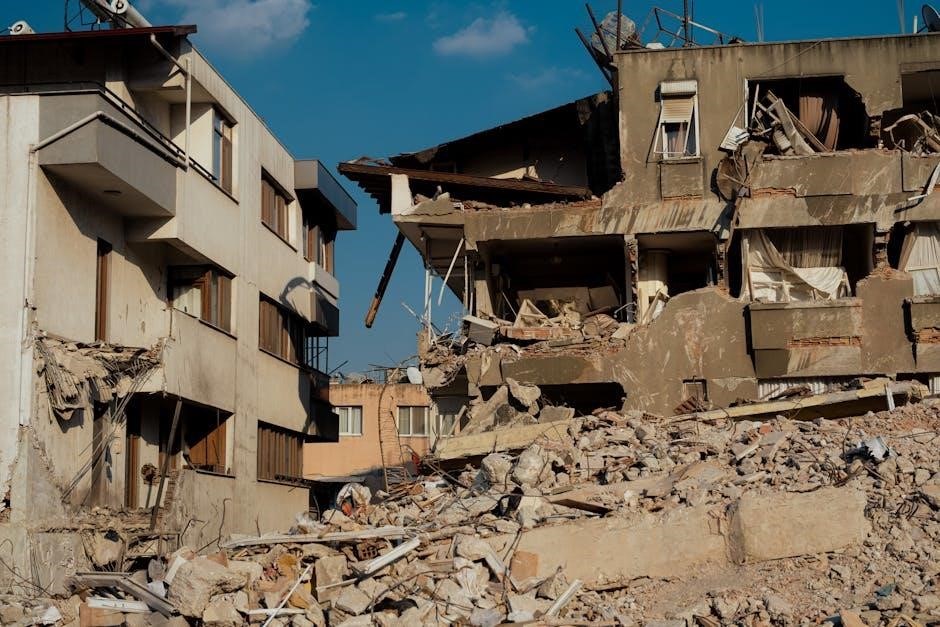Legionella risk assessment is a process used to identify and control risks of Legionnaires disease in properties, with a
specific form
for landlords available online.
What is Legionella Risk Assessment
A Legionella risk assessment is a tool used to identify and control Legionella-related risk factors in a property, workplace, or facility, with the goal of preventing Legionnaires disease.
This assessment is typically conducted by landlords, employers, and property managers to ensure compliance with regulations and to protect occupants from the risk of Legionnaires disease.
The assessment involves evaluating the property’s water systems, including storage tanks, pipes, and appliances, to identify potential sources of Legionella bacteria.
It also involves implementing controls to mitigate these risks, such as regular maintenance and testing of the water systems.
By conducting a Legionella risk assessment, landlords and property managers can help prevent the spread of Legionnaires disease and ensure a safe and healthy environment for occupants.
The assessment is an important step in maintaining a safe and healthy property, and is typically required by law for certain types of properties.
Legionella Risk Assessment Template
Legionella risk assessment templates are available online for landlords to download and use in their properties, with a free template available for domestic premises purposes only.
Download Free Template
To download a free legionella risk assessment template, landlords can visit various websites that offer this service, with the template being specifically designed for domestic premises. The template is available in a pdf format, making it easy to download and print. Landlords can fill in the form to assess the risk of legionella in their properties, with the template covering all essential areas. The free template is a useful tool for landlords to ensure they are complying with their legal responsibilities. By downloading the template, landlords can conduct a thorough risk assessment and take steps to mitigate any risks. The template is a valuable resource for landlords, and it can be used to help prevent the risk of legionnaires disease in their properties. The template is easy to use and understand, making it a useful tool for all landlords.

Importance of Legionella Risk Assessment
Legionella risk assessment is crucial for landlords to prevent legionnaires disease, with a
specific
form helping to identify risks and ensure compliance with regulations always.
Primary Goal
The primary goal of a legionella risk assessment form for landlords is to provide a comprehensive framework for assessing and mitigating legionella risks in domestic premises. This goal is achieved by identifying potential sources of legionella bacteria and evaluating the likelihood of exposure. The form is designed to help landlords understand their responsibilities and take necessary steps to prevent legionnaires disease. By using the form, landlords can ensure compliance with regulations and protect their tenants from the risks associated with legionella. The primary goal is to create a safe and healthy living environment, and the legionella risk assessment form is an essential tool in achieving this objective. The form is a crucial component of a landlord’s overall risk management strategy, and its use is highly recommended. Effective use of the form can help prevent outbreaks and reduce the risk of legionnaires disease.

Legionella Risk Assessment Process
Streamline risk assessment with a comprehensive and systematic
approach
to identify and control legionella risks, using online resources and tools effectively always.
Streamline Risk Assessment
To streamline risk assessment, it is essential to use a comprehensive and systematic approach, utilizing online resources and tools to identify and control legionella risks effectively. This can be achieved by implementing a structured methodology, which includes assessing the property’s water systems, identifying potential risks, and implementing controls to mitigate these risks. By streamlining the risk assessment process, landlords can ensure that their properties are safe and compliant with regulations, reducing the risk of legionnaires’ disease outbreaks. A well-structured approach will also help to reduce the time and effort required to complete the risk assessment, making it a more efficient and effective process. Additionally, using online templates and guides can provide valuable support and guidance throughout the risk assessment process, helping to ensure that all necessary steps are taken. This approach is highly recommended for landlords.

Record Keeping
Landlords must keep records of legionella risk assessments, including dates and findings, using a suitable
- record keeping system
for future reference and compliance.
Legal Responsibility
Landlords have a legal responsibility to ensure the health and safety of their tenants, which includes conducting a legionella risk assessment. According to the law, landlords must take steps to identify and control the risks of Legionnaires disease in their properties. This includes implementing measures to prevent the growth of legionella bacteria in water systems, such as regular cleaning and maintenance of water tanks and pipes. Landlords who fail to comply with these regulations can face serious consequences, including fines and legal action. It is essential for landlords to understand their legal responsibilities and take necessary steps to ensure the safety of their tenants. By using a legionella risk assessment form, landlords can demonstrate their commitment to compliance and reduce the risk of legal action. Regular reviews and updates of the risk assessment are also necessary to ensure ongoing compliance.

Legionella Report or Certificate
A Legionella report or certificate is useful for landlords to document their risk assessment and mitigation measures taken to prevent Legionnaires disease.
Practical Guidance
Practical guidance is essential for landlords to conduct a thorough legionella risk assessment, with a focus on identifying potential sources of contamination and taking steps to mitigate risks. The guidance provided is suitable for low-risk domestic properties, including those with combination boilers or basic water storage for hot water used daily. A legionella risk assessment form for landlords pdf can be downloaded and used to assess the risks associated with legionella in their properties. The form provides a comprehensive framework for assessing and mitigating legionella risks, helping landlords to ensure compliance with regulations and maintain a safe environment for their tenants. By following the practical guidance and using the legionella risk assessment form, landlords can reduce the risk of legionnaires disease and ensure a safe and healthy living environment. This guidance is particularly useful for landlords who are new to conducting legionella risk assessments;
Legionnaires Disease Risk Assessment Template
Template provides a comprehensive framework for assessing legionella risks in properties with a specific form for landlords available online for download and use immediately.
Template Details
The legionella risk assessment form for landlords pdf is a detailed document that outlines the necessary steps to identify and control legionella risks in domestic premises. The template is designed to be user-friendly and easy to understand, with clear instructions and guidance on how to complete the assessment. It covers all essential areas, including the identification of potential risk factors, the assessment of the likelihood of legionella growth, and the implementation of control measures to prevent outbreaks. The template is available for download online and can be tailored to suit the specific needs of individual properties. By using this template, landlords can ensure that they are taking a proactive approach to managing legionella risks and protecting the health and wellbeing of their tenants. The template is a valuable resource for landlords who want to ensure compliance with regulations.
Legionella risk assessment forms are essential tools for landlords to ensure compliance and safety, with online templates available for easy download and use purposes only.
Final Thoughts
Legionella risk assessment forms for landlords are crucial in preventing outbreaks of Legionnaires disease.
The process involves identifying potential sources of Legionella and taking steps to control the risks.
A landlord legionella risk assessment template can be downloaded online and tailored to specific properties.
It is essential to fill in the form accurately and maintain records of the assessment.
Landlords have a legal responsibility to undertake a Legionella risk assessment, and using a template can help ensure compliance.
By following the guidelines and using the template, landlords can reduce the risk of Legionnaires disease and create a safer environment for tenants.
The template provides a comprehensive framework for assessing and mitigating Legionella risks, and it is available for free download.
Using the template is a simple and effective way to manage Legionella risks and ensure a safe and healthy environment;